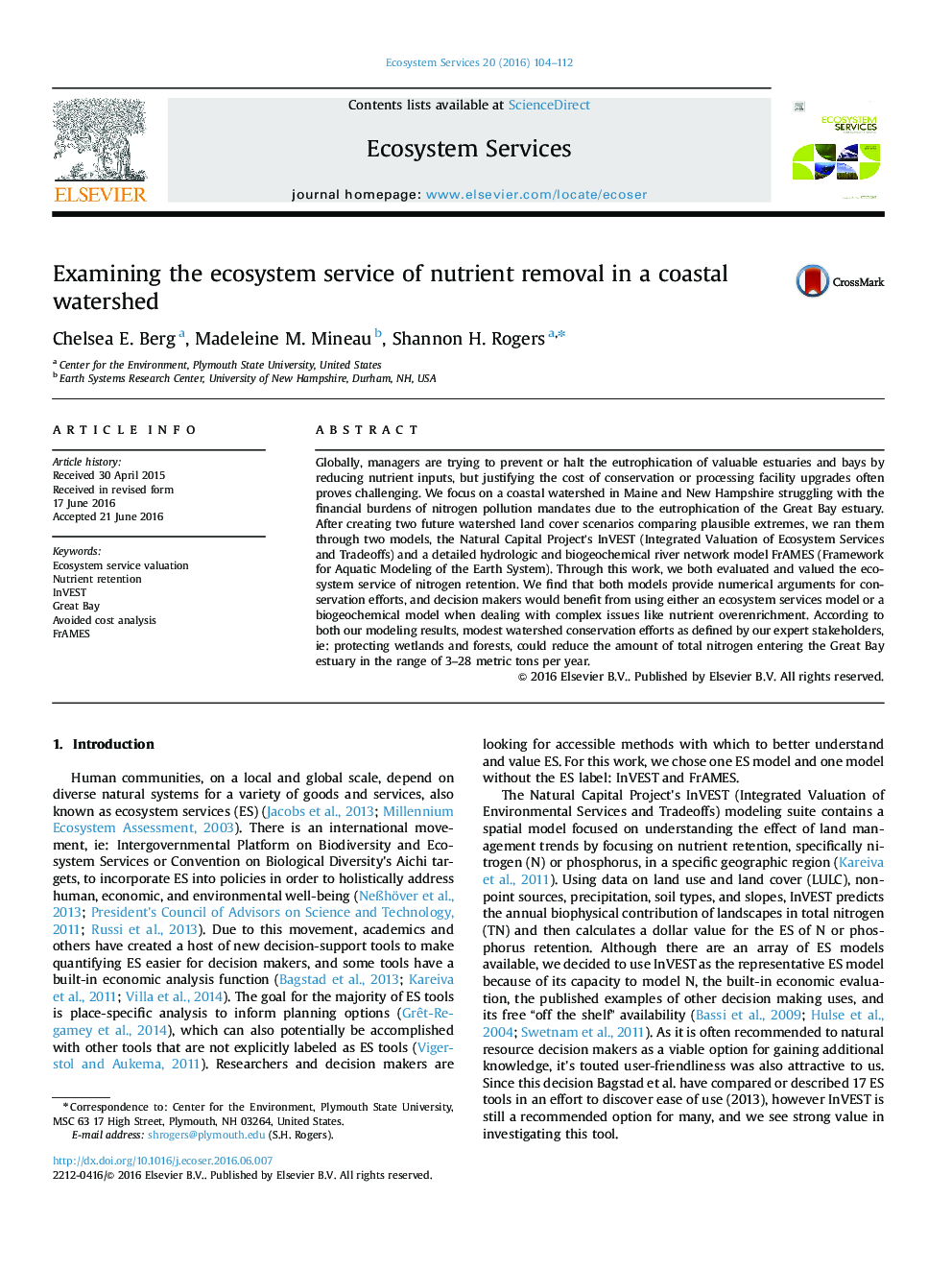| Article ID | Journal | Published Year | Pages | File Type |
|---|---|---|---|---|
| 6556565 | Ecosystem Services | 2016 | 9 Pages |
Abstract
Globally, managers are trying to prevent or halt the eutrophication of valuable estuaries and bays by reducing nutrient inputs, but justifying the cost of conservation or processing facility upgrades often proves challenging. We focus on a coastal watershed in Maine and New Hampshire struggling with the financial burdens of nitrogen pollution mandates due to the eutrophication of the Great Bay estuary. After creating two future watershed land cover scenarios comparing plausible extremes, we ran them through two models, the Natural Capital Project's InVEST (Integrated Valuation of Ecosystem Services and Tradeoffs) and a detailed hydrologic and biogeochemical river network model FrAMES (Framework for Aquatic Modeling of the Earth System). Through this work, we both evaluated and valued the ecosystem service of nitrogen retention. We find that both models provide numerical arguments for conservation efforts, and decision makers would benefit from using either an ecosystem services model or a biogeochemical model when dealing with complex issues like nutrient overenrichment. According to both our modeling results, modest watershed conservation efforts as defined by our expert stakeholders, ie: protecting wetlands and forests, could reduce the amount of total nitrogen entering the Great Bay estuary in the range of 3-28 metric tons per year.
Related Topics
Life Sciences
Agricultural and Biological Sciences
Agricultural and Biological Sciences (General)
Authors
Chelsea E. Berg, Madeleine M. Mineau, Shannon H. Rogers,
